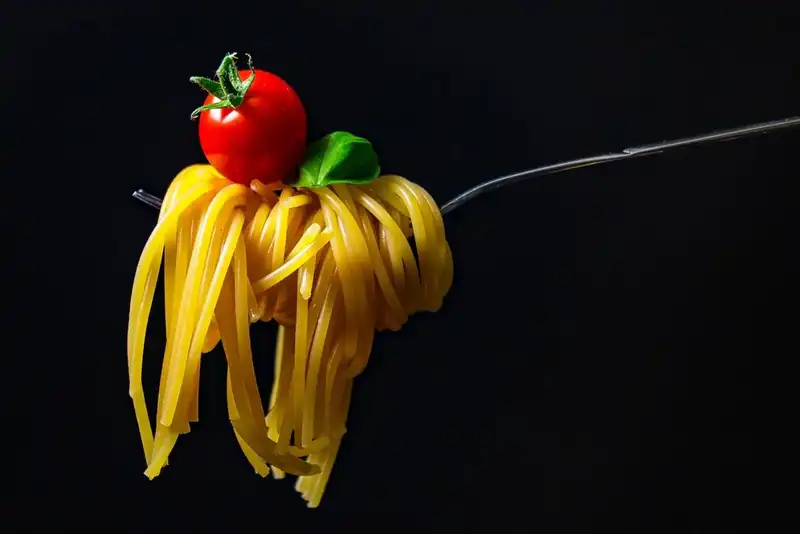What is the FIFO method?
The FIFO (First In, First Out) method assumes that the oldest inventory items are sold first. This approach is ideal for restaurants as it promotes freshness, reduces food spoilage, and accurately reflects the flow of perishable goods in daily operations.
Which Inventory Method is Best for Your Restaurant?
Overview
Running a restaurant isn't just about serving great food - it's also about keeping track of what you spend on ingredients and how that affects your profits. One important part of this is choosing the right way to record the cost of the food and supplies you buy. This is called an inventory costing method, and the method you pick can change how your food costs appear in your records, how you set menu prices, and even how much tax you pay at the end of the year.
Many restaurant owners are not sure which method to use - FIFO (First In, First Out), LIFO (Last In, First Out), or Weighted Average. These may sound complicated, but they simply show how the cost of the food you buy gets counted when you sell meals to your customers. Picking the right one depends on what kind of food you sell, how fast it moves, and how much prices change when you buy from suppliers.
Inventory Costing Methods

Before you decide which inventory costing method is right for your restaurant, it's important to understand what each method really means. These methods are simply ways to figure out how much your food and supplies cost when you sell them. They don't change how you actually store or use your ingredients in the kitchen - they only affect the numbers you put into your accounting records.
1. FIFO (First In, First Out)
FIFO stands for First In, First Out. This means that the first items you buy are the first ones you count as sold. In other words, you're selling your oldest stock first. This method makes the most sense for restaurants because food is perishable and needs to be used before it spoils. FIFO usually matches how kitchens actually work. It also helps show the real cost of ingredients, especially when food prices are going up.
2. LIFO (Last In, First Out)
LIFO means Last In, First Out. With this method, the newest items you buy are counted as sold first. This doesn't make sense for most restaurants because it can mean you are selling the newest food while the older food sits on the shelf, risking spoilage. However, some businesses that sell things like canned goods, alcohol, or other shelf-stable items might use LIFO. One reason some businesses pick this method is because it can lower profits on paper when prices are rising, which might reduce taxes. But for most restaurants, LIFO is not very practical.
3. Weighted Average Costing
The Weighted Average method takes all the costs of an item and averages them. For example, if you buy chicken at different prices during the month, the method averages the cost of all those chickens to figure out the price to record when you sell a dish. This method smooths out price changes and can make bookkeeping easier, especially for restaurants that buy the same items often in large amounts.
Streamline Your Inventory. Order Smartly.
Start Simplifying Your Orders with Altametrics
FIFO (First In, First Out)
FIFO, which stands for "First In, First Out," is the most common inventory costing method used by restaurants - and for good reason. It is simple to understand, matches the natural flow of food in a kitchen, and helps reduce waste.
With FIFO, you assume that the first items you buy are the first ones you use or sell. For example, if you order 10 cartons of milk on Monday and 10 more on Friday, FIFO says you use Monday's milk first. This makes sense because food products, especially perishables like dairy, meat, and vegetables, have short shelf lives. Using older items first prevents spoilage, protects food quality, and keeps your customers safe.
From an accounting point of view, FIFO usually shows higher profits when food prices are rising because you are recording the older, cheaper food costs while selling menu items at today's prices. This can make your restaurant's profits look better on paper, but it may also mean paying more taxes since your reported income is higher. On the bright side, FIFO gives a more accurate picture of what your remaining inventory is worth because it reflects the most recent (and likely higher) prices for what's still in your stockroom.
Most restaurants - including fine dining, casual dining, cafes, and bakeries - use FIFO because it mirrors how food actually moves in the kitchen. It keeps inventory fresh and reduces the chances of food going bad or being wasted.
However, there is one downside - in times of fast price increases (such as during supply shortages), FIFO may make your profit margins look artificially high. Even so, for restaurants that focus on freshness and quality, FIFO remains the best fit in both the kitchen and on the books.
LIFO (Last In, First Out)
LIFO stands for "Last In, First Out." This means the most recent items you bought are counted as the first ones you sell. While this method is used in some industries like manufacturing or retail, it is very rare in restaurants because it doesn't match how food naturally moves in the kitchen.
Imagine if you bought lettuce twice in the same week - once on Monday and again on Friday. LIFO would assume you use Friday's fresh lettuce before you touch Monday's. In real kitchen operations, this is not how things work. If you did this in reality, your older lettuce from Monday might spoil and go to waste, which means lost money and lower food quality.
So why would any business choose LIFO? One reason is taxes. When food prices are rising (which often happens due to inflation or supply issues), using the cost of the newest, more expensive stock as your "cost of goods sold" can make your profits look smaller on paper. Smaller profits can mean a lower tax bill. But this is mostly useful for industries with non-perishable goods - like auto parts or electronics - not restaurants.
In the restaurant world, the only possible exceptions might be bars or places that stock a lot of shelf-stable items like bottled beverages or canned goods. Even then, LIFO can be risky because it can make your financial records confusing and make it harder to keep track of older stock that could go bad or expire.
For most restaurants - especially those serving fresh food daily - LIFO is not a practical or smart choice. It can lead to inventory spoilage, waste, and unhappy customers if old stock gets forgotten or ignored.
Weighted Average Costing

Weighted Average Costing is a method where you calculate the average cost of all your inventory items, no matter when you bought them. Instead of tracking the exact price of each batch, you add up the total cost of all the items and divide by the number of items. This gives you a single average cost per unit to use when you sell your food.
For example, say you bought 10 pounds of rice at $1 per pound, then later another 10 pounds at $1.50 per pound. The weighted average cost would be calculated like this -
Total cost = (10 x $1) + (10 x $1.50) = $10 + $15 = $25
Total pounds = 20
Average cost per pound = $25 / 20 = $1.25
This average cost is then used to calculate the cost of goods sold when you use rice in your dishes.
The biggest benefit of weighted average costing is its simplicity. It smooths out price changes over time, which can be helpful if your supplier prices go up and down often. Instead of constantly adjusting your menu prices or worrying about which batch you're using, you work with one steady cost. This makes bookkeeping easier and reduces mistakes in cost calculations.
Weighted average costing works especially well for restaurants that sell large volumes of similar items - like quick-service restaurants (QSRs), food trucks, or buffet-style places. In these settings, inventory moves fast, and it's harder to track exact batches.
On the downside, because it averages costs, weighted averages can sometimes hide price spikes. If a supplier raises prices sharply, it might take time for that increase to show up in your costing, which could affect your profits.
Still, for many restaurant owners who want to keep things simple while keeping a reasonable handle on food costs, weighted average costing is a practical, easy-to-manage choice.
Transform Your Restaurant Operations Now!
Effortless Inventory Tracking with Altametrics!
Key Factors to Consider
Choosing the right inventory costing method for your restaurant isn't just about picking the one that sounds best - it's about understanding what fits your specific situation. Several important factors can help guide your decision.
1. Perishability of Inventory
If your restaurant deals mostly with fresh, perishable items like vegetables, dairy, meat, or seafood, FIFO is usually the best choice. This method matches how you actually use food in your kitchen - oldest items first - helping reduce waste and keep food safe. On the other hand, if you sell mainly shelf-stable items like canned goods, spices, or bottled drinks, you might consider other methods, though FIFO still works well in many cases.
2. Price Volatility
If the prices of your ingredients change a lot, your costing method will affect how those changes show up in your records. FIFO uses the oldest costs first, so if prices are rising, your profits might look higher. LIFO uses the newest costs first, which can lower profits during price hikes but isn't common for restaurants. Weighted average smooths out the ups and downs by averaging costs over time, which can make managing price swings easier.
3. Operational Complexity
Think about how much time and effort you can spend tracking inventory costs. FIFO and LIFO require tracking when items were purchased, which can get complicated without the right system. Weighted average is simpler because it averages all costs. If you use inventory software or a Point of Sale system that automates calculations, FIFO can be easier to manage.
4. Tax Impact
Different methods can change your taxable income. For example, LIFO can lower taxable income when prices rise, but it might not reflect actual food usage well. It's a good idea to talk with a tax professional about the impact on your business.
5. Business Size and Volume
Small, independent restaurants often benefit from the simplicity and accuracy of FIFO, especially if they use fresh ingredients. Larger operations or chains might prefer weighted average for ease and consistency across many locations.
By weighing these factors, you can choose an inventory costing method that fits both your kitchen operations and your financial goals.
Practical Recommendations for Different Restaurant Types
Not every restaurant is the same, and your choice of inventory costing method should reflect the type of food you serve, how fast you sell it, and how complex your operations are. Here are some practical recommendations based on common restaurant types -
Full-Service and Fine Dining Restaurants
These restaurants focus heavily on fresh ingredients and high-quality dishes. Since freshness and minimizing waste are top priorities, FIFO (First In, First Out) is usually the best choice. FIFO helps ensure that older ingredients are used first, reducing the risk of spoilage and keeping your menu items tasting their best. It also closely matches how kitchens naturally operate and provides accurate food cost data that reflects actual usage.
Fast Casual and Quick-Service Restaurants (QSRs)
Restaurants like fast-casual chains or quick-service spots move large volumes of food quickly, often using standardized recipes and ingredients. For these types of operations, Weighted Average Costing often works well. This method simplifies bookkeeping by averaging the cost of inventory over time, reducing the need to track every single batch of ingredients. It helps smooth out cost fluctuations, making pricing more stable and management easier.
Bars and Beverage-Heavy Establishments
Bars or restaurants with a strong focus on alcohol and shelf-stable products can sometimes use LIFO (Last In, First Out) for certain items, especially if prices fluctuate and there's a tax advantage. However, most beverage inventory is tracked closely, so FIFO or Weighted Average are still the safer, more practical options to avoid confusion and spoilage.
Small, Independent Restaurants and Food Trucks
Smaller operations benefit from simplicity and clarity. FIFO is typically the easiest to understand and manage, especially when dealing with fresh produce and perishables. It helps reduce waste and gives a clear picture of food costs, which is crucial for tight budgets.
Remember, there's no one-size-fits-all answer. The best method is the one that fits your restaurant's menu, volume, and management style. You can always review and adjust your method as your business grows or changes.
Summary
Choosing the right inventory costing method is an important decision that affects more than just your accounting. It impacts how you manage your kitchen, control food waste, price your menu, and understand your profits. There's no perfect method for every restaurant - the best choice depends on your specific needs.
If your restaurant works mostly with fresh ingredients and values minimizing spoilage, FIFO is often the best fit. It matches how food flows in the kitchen and provides accurate cost tracking. For high-volume, fast-moving operations like quick-service restaurants, weighted average costing offers simplicity and smooths out price changes, making inventory easier to manage. LIFO is rarely suitable for restaurants but may work in limited cases for shelf-stable inventory with tax considerations.
Remember, the method you choose should align with how your kitchen runs and what makes sense for your financial goals. Managing inventory costs well can help you control expenses and improve profitability.
Before making a final decision, it's wise to talk with your accountant or financial advisor who understands the restaurant business. They can help you consider tax rules and accounting standards that might affect your choice.









































































































































































































































































